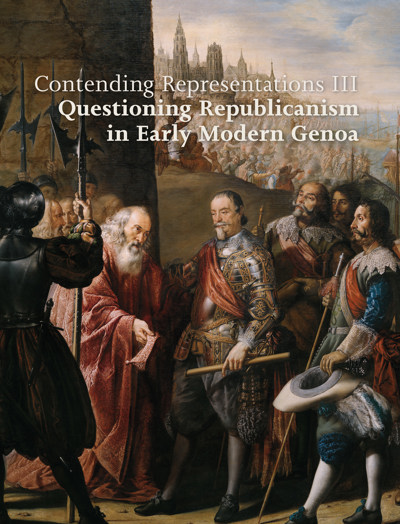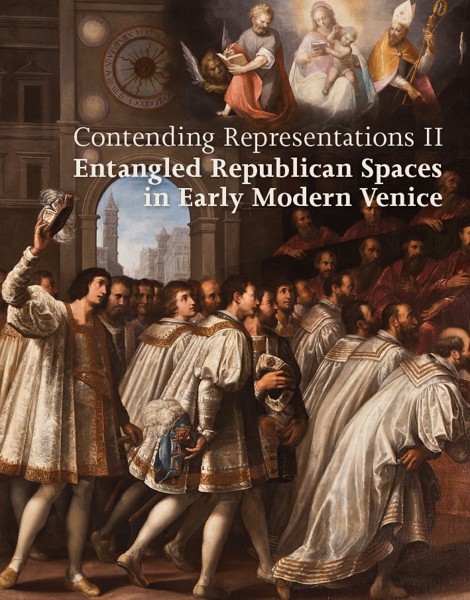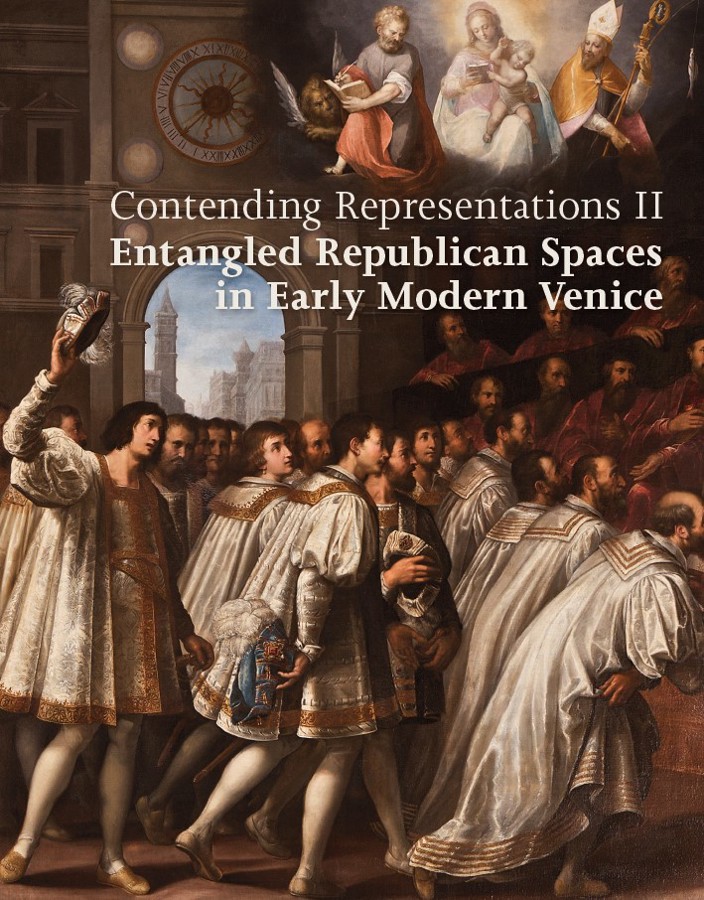
Contending Representations II
Entangled Republican Spaces in Early Modern Venice
Giovanni Florio, Alessandro Metlica (eds)
- Pages: 192 p.
- Size:216 x 280 mm
- Illustrations:86 col.
- Language(s):English
- Publication Year:2024
- € 50,00 EXCL. VAT RETAIL PRICE
- ISBN: 978-2-503-60519-7
- Hardback
- Available
- ISBN: 978-2-503-60520-3
- E-book
- Available
The volume addresses the issue of political celebration in early modern Venice. Dealing with processional orders and iconographic programs, historiographical narratives and urbanistic canons, stylistic features and diplomatic accounts, the interdisciplinary contributions gathered in these pages aim to question the performative effectiveness and the social consistency of the so called ‘myth’ of Venice: a system of symbols, beliefs and meanings offering a self-portrait of the ruling elite, the Venetian patriciate. In order to do so, the volume calls for a spatial turn in Venetian studies, blurring the boundaries between institutionalized and unofficial ceremonial spaces and considering their ongoing interaction in representing the rule of the Serenissima. The twelve chapters move from Palazzo Ducale to the Venetian streets and from the city of Venice to its dominions, thus widening considerably the range of social and political actors and audiences involved in the analysis. Such multifocal perspective allows us to challenge the very idea of a single ‘myth’ of Venice.
Introduction
1. Giovanni Florio and Alessandro Metlica, Università degli Studi di Padova: Ritual and Popular Politics in the Republic of Venice
2. Giorgio Tagliaferro, Warwick University: The Meeting of Sebastiano Ziani withAlexander III in the Great Council Hall: Staging, Viewing, and Understanding the Body Politic in Late Sixteenth-Century Venice
3. Monique O’Connell, Wake Forest University: Representative Spaces of Republicanism: Constitutional Thinking, Virtue Politics, and Venice’s Great Council Hall in Early Modern Europe
4. Massimo Rospocher, Istituto Storico Italo-Germanico di Trento: ‘Una parola in piazza fa più male che dieci libri in un gabinetto’: The Square as Political Space in Sixteenth Century Venice
5. Iseabail Rowe, European University Institute: ‘From the Clocke to the Shore’: Thomas Coryat’s ‘Streets’ of Piazza San Marco
6. Evelyn Korsch, Universität Erfurt: A Republic Becomes Divine: The Sacred Role of Topography in Venetian Civic Ritual
7. Umberto Cecchinato: Beyond the Ceremonial City: Music, Public Revelries, and Urban Spaces in Everyday Renaissance Venice
8. Marco Bellabarba, Università di Trento: Power, Friendship, and Protection: Venetian Rectors in Verona Between the Sixteenth and the Seventeenth Centuries
9. Erika Carminati, Indipendent scholar: Celebrations of Venetian Terraferma’s Rettori: From the Good Fama to its Subversion in the Public Ritual Sphere
10. Alfredo Viggiano, Università degli Studi di Padova: The Good Use of ‘People’ in Fifteenth-Century Venice: Reflections over a Controversial Term
11. Matteo Casini, University of Massachusetts: Venice Beyond Venice: The Foreign Approach to Venetian Rituals, 1400-1600s
List of Abbreviations
Bibliography
Notes on Contributors




